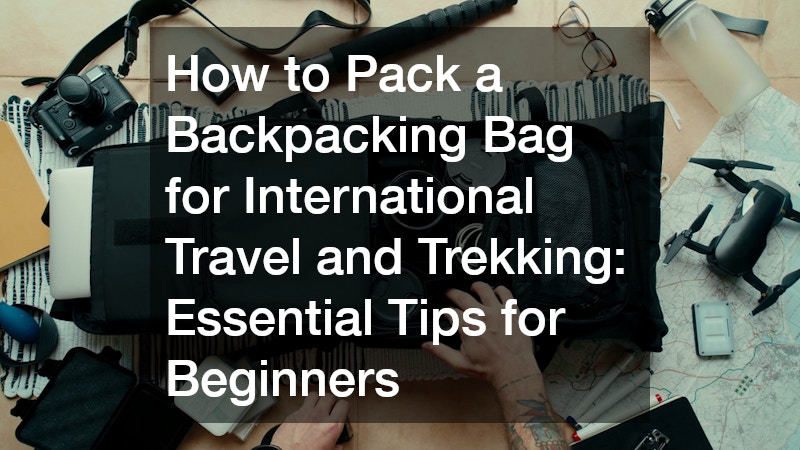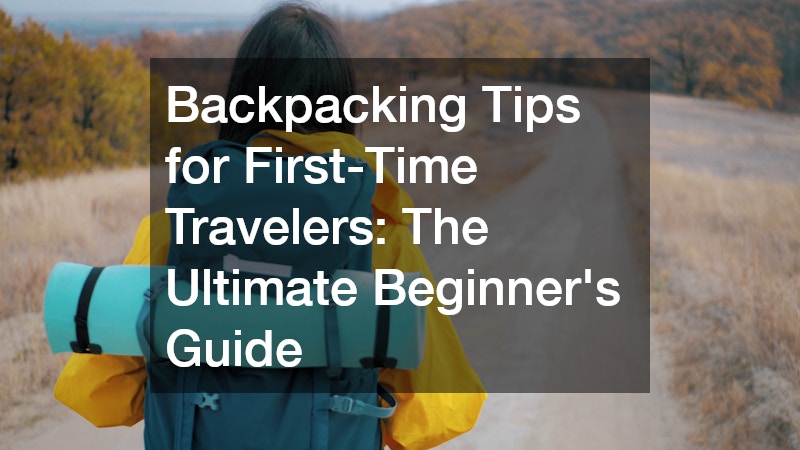
Traveling internationally with a backpack is an exciting adventure, but packing for it can feel overwhelming, especially for first-time backpackers. Whether you’re trekking through mountain trails or exploring bustling cities, having a well-packed backpack is key to a smooth, enjoyable trip. Packing smart means balancing the essentials you need without overloading yourself, ensuring comfort and readiness for any situation.
In this guide, we’ll break down practical advice on how to pack a backpacking bag for international travel and trekking, with tips tailored to travel enthusiasts eager to make the most of their journeys.
Why is Packing Your Backpacking Bag Correctly So Important?
Packing your backpack correctly sets the tone for your entire trip. A poorly packed bag can lead to discomfort, difficulty accessing your gear, or even injuries from uneven weight distribution. When trekking or traveling internationally, you want to keep your load light but prepared for varying climates, terrains, and unexpected situations.
Proper packing also helps you stay organized, which saves time and reduces stress when you’re on the move. It allows you to easily find what you need, whether it’s your passport, water bottle, or rain jacket. In addition, following packing strategies designed for backpacking ensures you don’t forget essentials while avoiding carrying unnecessary weight.
What Are the Must-Have Items for International Backpacking and Trekking?
Before you start stuffing your bag, it’s crucial to know what essentials you must bring. The list may vary depending on your destination and the duration of your trip, but here are some universal items:
- Travel Documents: Passport, visas, travel insurance, and copies of important papers.
- Clothing: Lightweight, moisture-wicking clothes, a warm layer, a rain jacket, and versatile footwear.
- Sleeping Gear: Sleeping bag or liner if camping, and a compact travel pillow.
- Health and Hygiene: First aid kit, toiletries (in travel-size containers), sunscreen, insect repellent, and hand sanitizer.
- Electronics: Universal adapter, power bank, phone, camera, and chargers.
- Navigation and Safety: Maps, compass, whistle, and headlamp.
- Food and Water: Reusable water bottle, snacks, and possibly a portable water filter.
These essentials ensure you’re ready for both urban exploration and outdoor trekking, covering your basic needs for safety, comfort, and convenience.
How to Pack a Backpacking Bag for International Travel and Trekking: Step-by-Step
Packing your backpack efficiently involves strategic placement and weight distribution. Here’s a step-by-step approach to help you pack like a pro:
- Choose the Right Backpack: Aim for a bag with 40-60 liters capacity, adjustable straps, and a comfortable padded hip belt to distribute weight evenly.
- Lay Everything Out: Organize your gear in front of you before packing to avoid overpacking.
- Pack Heavy Items Close to Your Back: Place dense items like a water bladder, cooking stove, or shoes near the center of your back to maintain balance.
- Use Packing Cubes: These help compartmentalize your gear, making it easier to find and organize.
- Roll Clothes: Rolling clothes instead of folding saves space and reduces wrinkles.
- Fill Empty Spaces: Use small items like socks or chargers to fill gaps inside shoes or corners.
- Keep Essentials Accessible: Store items like your passport, money, snacks, and rain jacket in outer pockets or top compartments.
- Distribute Weight Evenly: Make sure the load feels balanced on both sides to avoid strain.
Remember, less is more. Pack only what you need, and prioritize multi-use items.
What Are Some Backpacking Tips to Stay Comfortable and Safe?
Comfort and safety go hand-in-hand with how you pack. Here are some tried-and-true backpacking tips that can improve your experience on the trail or abroad:
- Adjust Your Backpack Correctly: Spend time adjusting straps and hip belts to fit your body snugly.
- Break In Your Backpack: Use it on practice hikes before your trip to avoid blisters and soreness.
- Protect Your Valuables: Use waterproof bags or dry sacks inside your backpack to keep electronics and documents dry.
- Stay Hydrated: Always carry a filled water bottle and know where to refill.
- Dress in Layers: Weather can change quickly, especially in mountainous areas.
- Keep a Small Daypack: Useful for short excursions and helps avoid carrying your full load all day.
These backpacking tips help you remain comfortable and secure while you explore new destinations.
How Can You Pack for Different Climates and Cultures?
International travel means encountering a variety of climates and cultures. Your packing should reflect this diversity.
- Hot Climates: Prioritize breathable fabrics, sun hats, and sunscreen.
- Cold Climates: Include thermal underwear, insulated jackets, and gloves.
- Wet Climates: Pack waterproof gear and quick-dry clothes.
- Cultural Sensitivity: Research local dress codes to pack modest or appropriate clothing.
- Versatile Footwear: Choose shoes that work both for trekking and casual walking in towns.
Packing for different environments requires foresight but enhances your comfort and respect for the places you visit.
Final Thoughts: Mastering How to Pack a Backpacking Bag for International Travel and Trekking
Packing for an international backpacking trip or trekking adventure doesn’t have to be stressful. By understanding what to bring, how to organize your gear efficiently, and incorporating essential backpacking tips, you’ll create a comfortable and practical pack that enhances your journey. Start early, pack smart, and stay flexible — your backpacking bag should be a tool that supports your adventure, not a burden.




